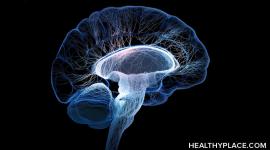Opioids Withdrawal: How Bad is It? Symptoms, Treatment

People who have become dependent on opioid drugs, whether prescription painkillers or illicit street drugs such as heroin, experience opioids withdrawal as soon as the substance begins to leave their system. Opioids withdrawal, sometimes referred to as abstinence syndrome, can begin quickly, even between doses of prescribed drugs when one is leaving the system and has not yet been replaced by more.
There are several factors involved in withdrawal from these euphoria-inducing, pain-killing drugs. Read on for information about opioids withdrawal symptoms, timeline, and treatment of opiate addiction.
Opioids Withdrawal Symptoms
Opioids withdrawal is uncomfortable, frequently described as a horrible experience. It involves both physical and mental health symptoms. Physical symptoms typically appear first, followed by psychological symptoms as the withdrawal process progresses.
The earliest opioids withdrawal signs resemble the common flu. These include
- Runny nose
- Watery eyes
- Sweating
- Excessive yawning
- Nausea and/or vomiting
Next can come
- Cravings
- Goosebumps and shivering
- Muscle aches and/or cramps
- Joint pain
- Loss of appetite
- Stomach cramping
- Diarrhea
- Tremors
- Increased heart rate
- Increased sensitivity to pain
Rarely, and only in extreme cases, opioid withdrawal symptoms include
- Fever
- Seizures
- Coma
Mental health symptoms of opioids withdrawal include
- Anxiety
- Depression/dysphoria
- Restlessness
- Irritability
- Insomnia
These symptoms are what’s possible for someone to experience when withdrawing from opioids. Not everyone experiences every symptom, nor does everyone experience everything with the same intensity. Further, the length of time that these symptoms last also varies.
Opioids Withdrawal Timeline
Because there are so many individual differences as well as factors that affect withdrawal, there isn’t a fixed schedule for the opioids withdrawal process. There is, however, a general pattern that helps establish a rough timeline for opioids withdrawal.
The onset of withdrawal depends on the opioid taken, how much is taken, and how it is put into the body. The withdrawal process can begin very quickly, as soon as a dose begins to wear off. In other cases, opioids withdrawal symptoms appear within the first 24 hours after the last opioids were used. Additional symptoms emerge over the next 72 hours. In less severe cases of opioids dependence, withdrawal symptoms can begin to wane in about a week. In more severe cases, the total recovery period lasts at least six months.
Several factors influence the length or timeline of the opioids withdrawal period:
- How frequently someone uses an opioid
- Severity of the opioid addiction (determined in part by an assessment called the Clinical Opiate Withdrawal Scale, or COWS)
- The individual’s overall physical and mental health
- The method of use (injection, snorting, and smoking are faster than pills to act and to exit the body)
The withdrawal timeline is also influenced by the opioids withdrawal help someone receives.
Opioids Withdrawal Treatment
A single opioids withdrawal protocol doesn’t exist because there are too many individual differences and influencing factors to create one set system of procedures. Despite the lack of a single treatment plan that applies to everyone, there are general treatment approaches to help people with opioids withdrawal.
Treating mild opioids withdrawal can be done with over-the-counter (OTC) pain relievers and anti-inflammatory drugs. Sometimes, doctors prescribe medications to help with nausea and diarrhea. Fluids and rest complete the treatment of mild withdrawal symptoms.
More intense withdrawal can require hospitalization or residential treatment for medical detox. This treatment is done to stabilize someone both physically and emotionally, and it involves
- Medications like clonidine to reduce opioids withdrawal symptoms
- Medications known as opioid antagonists or partial antagonists to block opioids receptors and prevent other opioids from attaching; these include the medications methadone, suboxone, buprenorphine, and naloxone
- Counseling
- Education
- Family therapy
- Support groups
No matter the treatment method and location, necessary for opioid withdrawal is time itself, and the exact amount is difficult to determine up front. Treating symptoms isn’t the only part of the process. The body and brain need time to repair themselves. They need time to begin producing natural opioids again. Opioids are necessary for many body systems to function. Therefore, it’s not a simple matter of just waiting for withdrawal symptoms to disappear. The brain and body must relearn how to produce and use endogenous opioids once again.
For safe and successful opioids withdrawal, it’s important to avoid stopping suddenly. Medical supervision, counseling, and emotional and social support are crucial for a positive treatment experience and outcome. The best treatment of opioids withdrawal incorporates the whole person, both their physical and mental health.
APA Reference
Peterson, T.
(2021, December 16). Opioids Withdrawal: How Bad is It? Symptoms, Treatment, HealthyPlace. Retrieved
on 2025, December 6 from https://www.healthyplace.com/addictions/opioid-addiction/opioids-withdrawal-how-bad-is-it-symptoms-treatment



